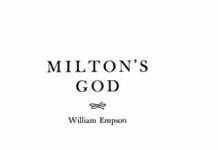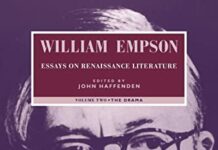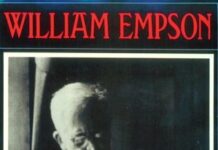
Ebook Info
- Published: 2016
- Number of pages: 292 pages
- Format: PDF
- File Size: 12.44 MB
- Authors: William Empson
Description
Many of the earliest books, particularly those dating back to the 1900s and before, are now extremely scarce and increasingly expensive. We are republishing these classic works in affordable, high quality, modern editions, using the original text and artwork.
User’s Reviews
Reviews from Amazon users which were colected at the time this book was published on the website:
⭐William Empson was a noted British literary critic and poet. (Interestingly, he was apparently drummed out of Magdalene College, Cambridge, for the shocking crime of having condoms in his room. That’s their loss.) He went on to distinguish himself for writing and for exceptional and insightful literary criticism. His most influential work was his first, Seven Types of Ambiguity, written at the tender age of 22! It’s a classic for a reason; he sets for himself the monumental task of understanding how poetry “works” — why, when done well, it moves us and sticks with us even though it was written in eras long past.Why does he set out on this journey? Because “unexplained beauty arouses an irritation in me, a sense that this would be a good place to scratch …”And scratch he does, penning an amazing, overwhelming and at times daunting work that dissects snippets and sections of well-known and lesser-known works of poetry and plays to find the source of their power. His answer? Ambiguity — “any verbal nuance, however slight, which gives room for alternative reactions to the same piece of language.”Every single written phrase can be read differently depending upon this natural ambiguity of word choices, the intent of the writer and the social context in which it is being read. Because, “Any word can be either screamed or grunted, so if you have merely a word written on paper you have to know not only its meaning but something about its context before it can tell you whether to grunt or to scream.”And poetry — condensed and distilled into almost pure essence — is especially open to interpretation. As he notes, “…the whole charm of the poem is its extravagant, its unreasonable simplicity.”And also because: “The demands of metre allow the poet to say something which is not normal colloquial English, so that the reader thinks of the various colloquial forms which are near to it, and puts them together; weighting their probabilities in proportion to their nearness.”Empson lovingly, cheerfully takes apart poems to try and explain how the various types of ambiguity fuel the whole creative endeavor. His efforts are so finely detailed, so exhaustive, I found myself at times skipping sections. Here’s an example that glazed my eyes:“Ambiguity of the sixth type by tautology (not by irrelevance) is likely to fulfil the following rather exacting conditions: there will be a pun which is used twice, once in each sense, and the massive fog of the complete ambiguity will then arise from a doubt as to which meaning goes with which word.”But then, fearful of missing a point, I went back and reread every section I have given short-shrift. And it was worth the double efforts, because along with critical insights, he has some incredible turns of phrase:“…only very delicate people are as tactful in this matter as the printed page.”“…final ‘judgment’ is a thing which must be indefinitely postponed.”“There is much danger of triviality in this, because it requires a display of ingenuity such as can easily be used to escape from the consciousness of one’s ignorance…”“And that is why the practice of putting single words into italics for emphasis (again the Victorians are guilty) is so vulgar …”“… a statement of the limitations of human life is a sort of recipe for producing humility, concentration, and sincerity in the reader …”“… to recognise melancholy truths is itself, if you can be protected somehow, an invigorating activity …”Seven Types of Ambiguity is a rich and rewarding read, and a wonderful reminder that — sometimes by intent, sometimes by instinct — good writing creates a deep and powerful world worthy of further analysis and introspection. But given the agile, curious mind behind this work, don’t think of it as a guide on how to be a better poet. That’s like reading a dissertation on particle physics from a distinguished thinker in the field and hoping it will help you change a flat tire. It may be well worth the read, and it will certainly expand your mind, but it will not help if you’re stranded on the side of the road.In fact, trying to harness ambiguity — in poetry or creative writing — will likely only leave you with a final product that seems trite and obvious. And William Empson would almost certainly damn that with faint but well-turned praise.
⭐I’ve been writing on VUCA, but am not yet ready to publish. Volatility, Uncertainty, Complexity and easy to identify in life. But ambiguity is like seeking to grasp quicksilver: it slips through your finger. Because of this, we aren’t always aware of the problem that we are facing and find it difficult to put a label on it. After all, diagnosis is half way to remedy. Yes, normal ambiguity involves dilemmas, double binds, polarities, paradoxes, and cognitive dissonances. The different disguises that Ambiguity takes require different tools (e.g., dilemmas need dilemma flipping, polarities need polarity maps). However, Empson wrote of seven types of polarities that occur in daily life, separate to the formal ones described above. He skillfully does this in the form of a novel, which has all the ingredients of excellent plot and well constructed characters. When you complete the book you are aware that you have encountered ambiguity, not in literary form, but in human life. It is sophisticated. It helps redefine ambiguity as we encounter it in the contradictory elements of our contemporary lives, in marriage, family, work, and personal relationships.
⭐The author appears to be sharing his philosophy. In the process, he provides too much. I read the entire book. I gained a better appreciation for poetry and analysis of written material. However, this book contains a complex way to do it using a scheme so complex that it is useless for application to general reading without extensive study and memorization.
⭐My God, is this book ever brilliant. I am astounded and dismayed that Empson wrote this book when he was 23 — what have I been up to?The text is really an object lesson in criticism in the strictest sense: his formulations about literature are both incredibly nebulous and terribly specific, and the organization is a bit of a disaster, but the readings are breathtaking: he does things with passages that make you despair of ever being so good. That’s what this book is for, I think: learning to read well as a scholar.Also, an amusing historical tidbit that he was kicked out of Cambridge after this was written (or rather, Magdalene College) because he was caught (by a porter?) with prophylactics in his room and possibly “in flagrante delicto” with a young lady. Absurd.
⭐Too wordy… goes on for like pages saying almost nothing in multiple ways. How does this get published?I will accept any author that at least trys to have clarity so you can understand them but this author has not the ethics to get to the point… he just writes on and on.A total waste of my precious time. It is dishonest and fraud to publish books like this.Thru it in the trash.
⭐Pretentious. Or maybe I’m just not intelligent enough to appreciate it.
⭐It is okay
⭐It is wonderful that someone on the Asperger’s spectrum applied himself to the subject of poetry. Imagine seven (and only seven) types of ambiguity. This is the finest book there is on the subject.
⭐much more esoteric than I remember it from Uni days; perhaps it’s too self-consciously clever for modern students?
⭐ordered this on a whim because it gets mentioned a lot in my circles and I figured I ought to know what exactly is written in here.it’s definitely dated, but even someone in this day and age can take something away from this. if you’re into discussing literature, why not have a look at this. i can think of more exciting theorists, but Empson is certainly a very interesting one too. the way the book is formated, phrased, etc. certainly gives it an old-school feel, though. if you’re OK with that, take a peek.
⭐no cumple mis expectativas, recomiendo buscar otras fuentes de información. texto oscuro e incomprensible, agradecería un texto expñlicativo para comprender las intenciones del autor.Perfect
⭐The book itself is incredible, but the cover of my copy was completely ruined.
Keywords
Free Download Seven Types Of Ambiguity in PDF format
Seven Types Of Ambiguity PDF Free Download
Download Seven Types Of Ambiguity 2016 PDF Free
Seven Types Of Ambiguity 2016 PDF Free Download
Download Seven Types Of Ambiguity PDF
Free Download Ebook Seven Types Of Ambiguity


